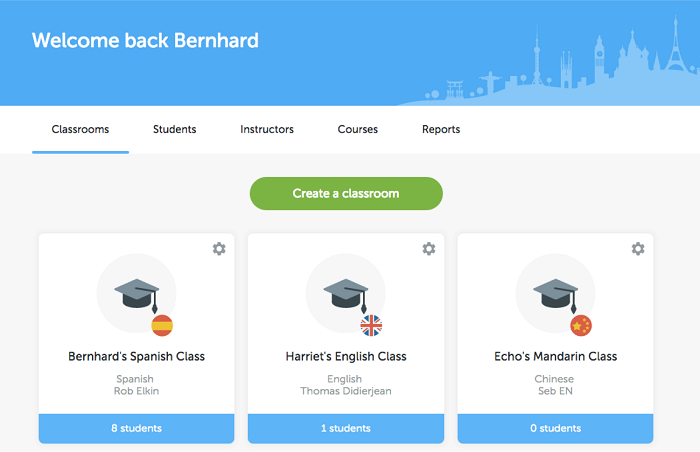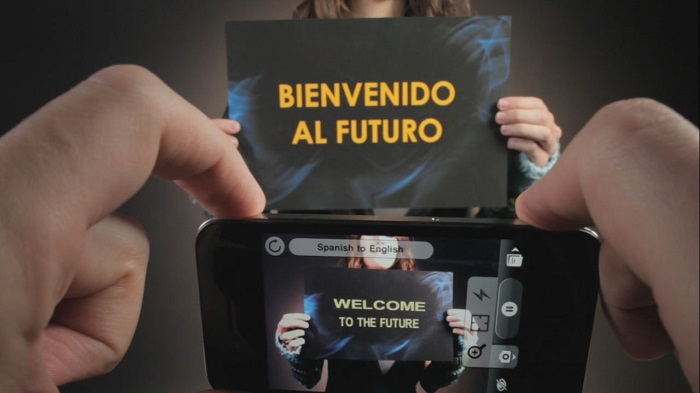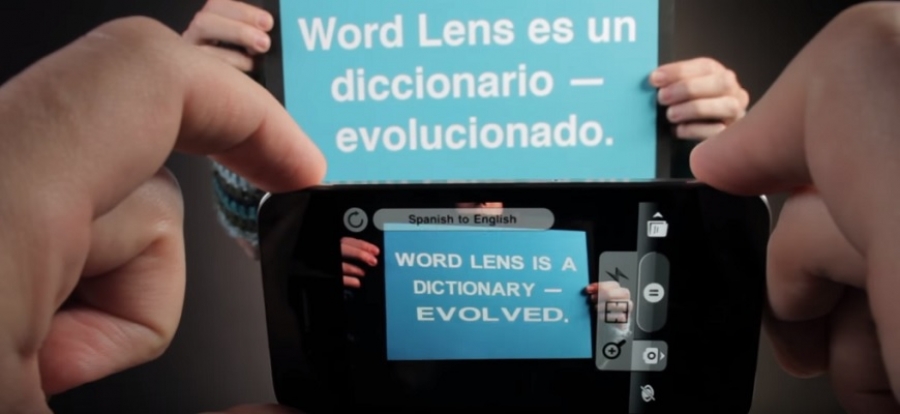In our digitally literate world, immersive technology is fast becoming the new way to absorb content. Indeed, immersive technologies - such as podcasts, augmented reality (AR) software, and even videos - have given learners unparalleled levels of customisation and individualisation when it comes to their own learning. Technology-based language tools currently on the market include language apps (such as Busuu’s Alexa Bot), real-time translators (such as Google Pixel Buds), AR (such as Word Lens) and VR (Mondly VR).
More easily than ever before, those looking to learn a language can go online and find a tool which enables them to immerse themselves in the subject. The key here being ‘finding something' - the enormous range of materials out there means that there is something to suit every learner’s needs, motivations, and learning preferences.
Let’s consider a classroom. In today’s digital age, teachers have a wealth of ready-made resources available to them, and indeed, so many “Teachers can use the spectrum of edtech to suit mixed-ability classes.”resources that finding the right ones might actually be a little daunting. A few years ago, teachers would have had to prepare their teaching materials by hand, something which is extremely time consuming, yet now they can focus on finding a balanced range of learning materials and methods for their students.
 Busuu
Busuu
In my experience as a teacher, I saw students hesitate to engage with learning a language because they felt embarrassed to publicly make a mistake. Immersive technology, meanwhile, offers students a ‘safe space’ to make mistakes without the worry of being judged. Teachers can use the spectrum of digital learning materials to suit mixed-ability classes (eg finding materials on one topic covering a range of difficulties so that students of all abilities are adequately challenged). A more difficult approach to achieve, especially when having to satisfy the demands of a constrained syllabus, might be to find materials on a range of topics. Podcasts about holidays, videos about art, and AR programmes putting you in a video game situation are all examples of diverse learning approaches that would appeal to the interests of a diverse group of students, while still fulfilling the requirements of the syllabus.
To help their students make the most out of learning a language, teachers must also consider different learning preferences. They have to consider that the people learning might respond differently to different trainer types. Some, for example, might prefer explanation and drill exercises, whereas others might respond better to expanded comprehension exercises.
 Word Lens
Word Lens
What does immersive technology mean for the teacher? Shifts in materials will dictate a shift in roles. Traditionally, the teacher has been an instructor, presenting information and then creating exercises to practice it. With immersive technology, however, it is possible that their role will be to guide, rather than to instruct. Of course, it is important for teachers themselves to be ‘fluent’ users of the relevant technologies, but by bringing a range of suitable materials into the classroom, they can then empower their students to explore within these materials and figure out for themselves what learning methods work for them. In doing so, students are most likely to achieve success in their learning.
What does this shift towards more immersive technologies in the classroom mean for students? I would hope higher engagement with the subject at hand! A world in which people actively live and work in a different language can seem abstract, and too far away to ever be relevant. Yet, immersive technologies can bring this world into the classroom. Students can see, hear, and speak with natives - even visit Paris via an AR environment!
There are, of course, well-known drawbacks to children engaging so closely with technology. Students who are presented with the freedom of a ‘computer lesson’ or an iPad can become easily distracted “Communicating in another language is about more than words.”and no longer listen to the teacher. We should encourage teachers to take a different perspective, and instead distinguish between a student checking their emails and becoming distracted, and a student who is exploring a related theme and furthering their learning. Immersive technology offers an opportunity for students to drive their own learning and explore the topics they are interested in, helping them to remember relevant words and constructions with greater ease.
In the media recently, we have seen debate around ‘too much screen time’ and its effects. Many apps, however, encourage students to ‘get out of the app’ and apply their learning in the real world. Learners engage with their learning in bite-sized lessons and in a way that suits them, and then feel the reward of their invested effort and time when they use their new knowledge in real conservation.
 Mondly (via Google Play)
Mondly (via Google Play)
It is important to say that it is not possible to learn a language with technology alone. Digital language tools will not replace teachers; they will, however, help educators to engage with students in meaningful ways that improve their learning journey. Similarly, language technology such as real-time translation will not replace the need to learn a language. Communicating in another language is about more than words. We express emphasis and emotion, willingly or unwillingly, sharing our cultural peculiarities. To learn a new language reveals a new way of looking at the world. Machines cannot articulate the pragmatics of a language, or the vivid and genuine character of someone simply by translating. Digital tools are stepping-stones to speaking a language, however a human-centric approach with real conservation will remain at the core of language learning, just as machines will never create or replicate human speech in a truly ‘human’ way.
Not only does immersive technology make language more tangible and ‘real’, but with a range of materials at their disposal, the student is empowered to take more responsibility for their own learning. Rather than simply following instructions through a set sequence of exercises, they are able to explore different content, and find a particular aspect that inspires them to keep learning. They then have a greater chance of being successful with their language learning, seeing it as something exciting rather than a compulsory subject concentrated towards a daunting exam.
Looking ahead, it’s important for teachers to feel confident with immersive technology, especially as the field expands. Reaching far beyond the benefits of ‘traditional’ teaching methods, immersive technology can successfully be brought into the classroom to the benefit of both teachers and students. As their roles in the classroom change because of the range of materials available, it is important for teachers to encourage students to take more responsibility for their learning, empower them to explore, and in doing so, change attitudes towards learning languages.
Want to receive cutting-edge insights from leading educators each week? Sign up to our Community Update and be part of the action!


















